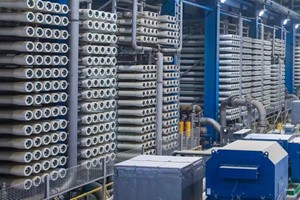The Austin City Council of Austin, Texas, has recently sanctioned contracts for the comprehensive redesign and expansion of the Walnut Creek Wastewater Treatment Plant. The approved contracts, valued at over $1 billion, signify a significant investment in the enhancement and modernization of the facility.
Commencing in 2025, the construction endeavors aim to augment the plant's treatment capacity by an additional 25 million gallons per day (GPD) to accommodate the burgeoning population growth in the vicinity. Presently permitted to treat up to 75 million GPD, the expansion is poised to address the escalating demands effectively.
This ambitious project encompasses a spectrum of improvements, including the replacement or refurbishment of aging infrastructure components, alongside the incorporation of advanced operational and environmental features throughout the facility. Notably, the initiative seeks to transition from conventional chlorine-based disinfection to a cutting-edge ultraviolet (UV) system, thereby enhancing safety for both workers and the surrounding community.
Moreover, the treatment process, both for the existing plant and the expansion, will undergo upgrades to curtail the presence of nutrients conducive to algae proliferation and subsequent blooms. This proactive measure is geared towards fostering the health of the Colorado River downstream of Austin. Additionally, the construction of a protective barrier around the plant is slated to bolster resilience against flood hazards.
It is imperative to note that the construction endeavors will span all areas of the plant, with meticulous planning ensuring uninterrupted operations throughout the process. The Walnut Creek Wastewater Treatment Plant, established in 1977 and subsequently expanded in 1987, 1990, and 2005 to achieve its present capacity, has undergone previous investments totaling $100 million between 2013 and 2024, underscoring the commitment to its continual improvement and efficacy.












